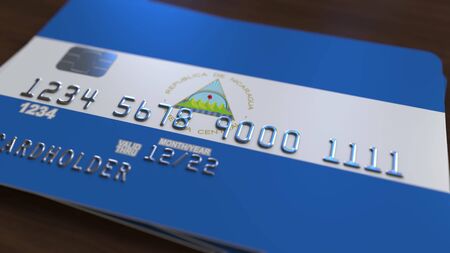1. Understanding the Role of Credit Cards in American Life
Credit cards are practically a household essential in the United States. For many families, they’re not just a way to pay for things—they’re a tool for everyday convenience, building credit history, and even handling emergencies. Let’s take a closer look at how credit cards fit into daily American life and why it’s so easy to fall into debt traps if you’re not careful.
Why Are Credit Cards So Popular?
There are several reasons why credit cards are everywhere in American households:
| Reason | Description |
|---|---|
| Convenience | Quick and easy payments without carrying cash. |
| Rewards Programs | Cashback, airline miles, and other perks encourage frequent use. |
| Building Credit | Regular, responsible use helps improve your credit score. |
| Emergency Backup | Useful when unexpected expenses pop up. |
| Online Shopping | Preferred or required payment method for many online stores. |
The Influence on Daily Spending Habits
With all these benefits, it’s no wonder credit cards have become so common. However, having easy access to credit can also change the way we spend. It often feels less painful to swipe a card than to hand over cash. This “out of sight, out of mind” feeling can make it easy to overspend—especially with online shopping or when dining out. Many people don’t realize how quickly those small purchases add up until they see their monthly statement.
A Look at Typical Household Use
| Common Uses | Example Expenses |
|---|---|
| Groceries & Gas | $50 on groceries, $40 at the gas station per week |
| Dine-Out & Delivery | $25 on pizza night, $15 coffee run, $40 dinner out |
| Bills & Subscriptions | $100 for utilities, $15 for streaming services monthly |
| Online Shopping Deals | $30 on sales or impulse buys per month |
| Travel Reservations | $200 flights or hotel bookings (occasional) |
The Double-Edged Sword of Accessibility
The easy access to credit is both a blessing and a curse. While it helps families handle big purchases or emergencies, it also makes it tempting to buy things now and worry about payments later. That’s why understanding how credit cards influence our spending—and knowing where the pitfalls are—is the first step toward avoiding common debt traps in U.S. consumer culture.
2. Recognizing Signs of Credit Card Debt Trouble
Spotting the Early Warning Signs
It’s easy to swipe a card and forget about it, but in the US, credit card debt can sneak up on you fast. Knowing the early warning signs can help you steer clear of deeper financial trouble. Here are some common red flags that your credit card use might be headed into risky territory:
Common Warning Signs Table
| Warning Sign | What It Looks Like | Why It Matters |
|---|---|---|
| Only Making Minimum Payments | You pay just the smallest amount due every month. | This stretches out your debt for years and racks up interest charges. |
| Relying on Credit for Everyday Expenses | You buy groceries, gas, or pay bills with your credit card because cash is tight. | Using credit for essentials often means you’re living beyond your means. |
| Your Balance Keeps Growing | The amount you owe goes up month after month, even if you make payments. | This is a sign spending is outpacing repayment—debt can snowball quickly! |
| Maxing Out Cards or Getting Close to Limits | Your available credit shrinks and you’re near or at your limit. | This hurts your credit score and leaves little room for emergencies. |
| Missing Payments or Paying Late | You forget or don’t have enough to pay on time. | This leads to late fees, penalty interest rates, and credit score damage. |
| Opening New Cards to Handle Old Debt | You apply for new credit cards just to pay off existing balances. | This creates a cycle that’s hard to break and increases overall debt risk. |
| Anxiety About Your Statements | You avoid looking at bills or feel stressed when they arrive. | This emotional stress is a sign your finances may be off track. |
When to Take Action
If you recognize any of these warning signs in your own life, it’s time to pause and take a closer look at your spending habits. Don’t wait until things get out of control—catching these signals early gives you more options and less stress down the road. Remember, being honest with yourself about your money situation is the first step toward taking control and building a healthier financial future!
![]()
3. Common Credit Card Pitfalls to Watch Out For
Only Paying the Minimum Balance
One of the most common traps Americans fall into is only paying the minimum balance on their credit cards each month. While it might seem manageable, this approach can lead to mounting interest charges and a long road to becoming debt-free. Here’s a quick look at how much more you could pay in interest by making just minimum payments:
| Credit Card Balance | Interest Rate (APR) | Monthly Minimum Payment | Total Interest Paid Over Time* |
|---|---|---|---|
| $1,000 | 20% | $25 | Over $400 |
| $5,000 | 20% | $125 | Over $2,000 |
*Estimates assume no new purchases and consistent minimum payments.
Chasing Credit Card Rewards Without a Budget
Many people are drawn to flashy rewards programs—cash back, airline miles, and other perks. But without careful budgeting, its easy to overspend just to earn points or bonuses. The extra spending can wipe out any value those rewards bring if you’re carrying a balance and paying high interest rates.
Example: Rewards vs. Interest Charges
| Monthly Spending for Rewards | Reward Earned (1.5%) | Potential Interest (20% APR if not paid off) | Net Gain/Loss |
|---|---|---|---|
| $1,000 | $15 | $16.67 | – $1.67 |
| $2,000 | $30 | $33.33 | – $3.33 |
Overspending During Sales and Promotions
A big sale—like Black Friday or holiday deals—can tempt anyone to use their credit card more than they planned. Retailers often encourage impulse buys with “limited time offers,” but these purchases can quickly add up and become hard to pay off later.
Tips to Avoid Overspending on Sales:
- Create a shopping list before heading out or logging on.
- Set a strict spending limit for each event or holiday.
- Avoid store credit cards unless you can pay them off immediately—these often have higher interest rates.
- Wait 24 hours before making big purchases to see if you really need them.
The Takeaway: Stay Mindful with Every Swipe
By recognizing these common pitfalls—only paying the minimum, chasing rewards without a plan, and getting swept up in sales—you’ll be better prepared to use your credit card as a tool rather than falling into debt traps that are all too common in American consumer culture.
4. Effective Strategies to Manage and Prevent Debt
Smart Budgeting for Everyday Life
One of the best ways to stay out of credit card debt is by making a realistic budget that fits your lifestyle. Start by listing your monthly income and all your regular expenses, like rent, groceries, gas, and subscriptions. Don’t forget about those occasional costs, like birthday gifts or car maintenance. A simple table can help you keep track:
| Category | Estimated Monthly Cost |
|---|---|
| Housing (Rent/Mortgage) | $1,200 |
| Groceries | $400 |
| Utilities & Internet | $200 |
| Transportation (Gas/Transit) | $150 |
| Credit Card Payments | $100 |
| Entertainment & Dining Out | $150 |
| Savings/Unexpected Expenses | $100 |
This kind of breakdown helps you see where your money goes and spot areas where you can cut back if needed.
Track Your Credit Card Balances Regularly
It’s easy to lose track of how much you’re spending if you swipe without checking. Make it a habit to log into your credit card account weekly to review your balance and recent transactions. Many American banks and card issuers have user-friendly mobile apps that let you set up alerts whenever a purchase is made or your balance gets close to your limit. This way, you’ll always know where you stand and avoid any surprises when the bill arrives.
Helpful Tools for Tracking Balances:
- Bank Apps: Most offer real-time notifications and easy access to statements.
- Spending Trackers: Apps like Mint or YNAB are popular in the US for budgeting and tracking all accounts in one place.
- Spreadsheets: If you prefer pen-and-paper style, a simple Excel or Google Sheet works great.
Set Up Payment Reminders to Stay Ahead
A missed payment can hurt your credit score and lead to costly late fees. To avoid this common trap, set up automatic payments for at least the minimum amount due each month. You can also set calendar reminders on your phone or use email alerts from your credit card company as an extra safety net. Here’s a quick comparison of reminder options:
| Method | Benefits |
|---|---|
| Automatic Payments | No missed payments, stress-free bill pay. |
| Email/SMS Alerts | Personalized reminders before due dates. |
| Calendar App Notifications | Keeps payment dates front-of-mind with pop-up alerts. |
Treat Credit Like Real Money—Not Extra Cash!
A big part of American consumer culture is “buy now, pay later”—but it’s smart to treat your credit card as if you’re spending real cash from your checking account. Before making a purchase, ask yourself if you could pay for it today without borrowing. This mindset shift helps prevent impulse buys and keeps your balances manageable.
Quick Tips for Staying Ahead:
- Create a weekly “money check-in” with yourself or your family.
- Keep receipts or use apps to categorize purchases by needs vs. wants.
- If you carry a balance, focus on paying more than the minimum each month to save on interest.
Taking these practical steps makes it easier to enjoy the benefits of credit cards—like rewards points and convenience—while steering clear of common debt traps in the US.
5. Smart Habits for Responsible Credit Card Use
Make Credit Cards Work for You, Not Against You
Credit cards are a big part of daily life in the US, but using them wisely is key to avoiding common debt traps. The good news? Building a few smart habits into your everyday routine can help you stay ahead and keep your budget on track.
Everyday Routines for Healthy Credit Card Use
| Habit | How It Helps | Simple Tip |
|---|---|---|
| Pay Your Balance in Full Each Month | Avoids interest charges and keeps debt from piling up | Set up automatic payments for the full statement balance |
| Track Your Spending Regularly | Makes sure you don’t overspend and stay within your budget | Use a budgeting app or check your credit card app weekly |
| Set a Personal Credit Limit Lower than Your Card’s Limit | Helps prevent accidental overspending and keeps utilization low, which is good for your credit score | Pretend your card’s limit is $500 less than it really is and stick to it |
| Review Your Statements Every Month | Catches errors or fraud early before they become bigger problems | Go over each charge online as soon as your statement posts |
| Avoid Using Cards for Everyday Small Purchases (like coffee) | Keeps little expenses from adding up and makes budgeting easier | Try using cash or a debit card for small, routine buys |
Mindsets That Make a Difference
- Treat credit as a tool, not free money: Remember, every swipe is borrowing money you’ll need to pay back soon.
- Think long-term about your financial health: Using credit responsibly helps build a strong credit history, which matters for things like renting an apartment or getting a car loan.
- Praise progress, not perfection: Nobody’s perfect. If you slip up one month, just get back on track next month.
- Talk about money with family: Open conversations at home make it easier to set goals and avoid bad habits together.
Quick Reminders for US Families:
- If you’re carrying a balance, focus on paying it down as fast as possible—even small extra payments help.
- If you have kids, show them how to read a credit card statement so they learn early.
- If you ever feel overwhelmed, reach out to a non-profit credit counselor for free advice—it’s more common than you think!
The right routines and mindsets can turn your credit card from a stress-maker into a helpful part of your family’s financial toolkit. Start small, stay consistent, and watch those smart habits add up!
6. Resources for Financial Guidance and Support
If you’re feeling overwhelmed by credit card debt, you’re definitely not alone. Thankfully, there are several trustworthy resources in the U.S. that offer guidance, support, and practical tools to help you manage and overcome credit card debt. Here’s where you can turn for real help:
Trusted Organizations That Can Help
| Organization | What They Offer | How to Access |
|---|---|---|
| National Foundation for Credit Counseling (NFCC) | Free or low-cost credit counseling, debt management plans, budgeting advice | nfcc.org |
| Consumer Financial Protection Bureau (CFPB) | Educational resources, complaint assistance, tips for managing credit cards | consumerfinance.gov |
| Credit Karma | Free credit score monitoring, personalized financial recommendations | creditkarma.com |
| Debt.org | Information on debt relief options, calculators, educational content | debt.org |
| Your Local Credit Union or Bank | Financial education seminars, budgeting workshops, one-on-one advice | Visit local branches or their websites for events and resources |
Useful Tools for Managing Credit Card Debt
- Budgeting Apps: Apps like Mint or You Need a Budget (YNAB) can track your spending and help create a plan to pay down your balances.
- Debt Payoff Calculators: Many financial websites offer free calculators so you can see how long it’ll take to pay off your cards based on your payments.
- Credit Reports: Get a free copy of your credit report every year at annualcreditreport.com. It’s important to check for errors and keep track of your progress.
- Helplines: NFCC offers free helplines where certified counselors can answer questions and provide step-by-step guidance.
Pro Tip: Watch Out for Scams!
If anyone promises to “erase” your debt instantly or asks for upfront fees before helping, be cautious—these are red flags. Stick with reputable organizations like the ones listed above.
You’re Not Alone—Help Is Available!
No matter where you are in your financial journey, reaching out for support is a smart move. These organizations and tools can give you the information and encouragement you need to take control of your credit card debt—one step at a time.


